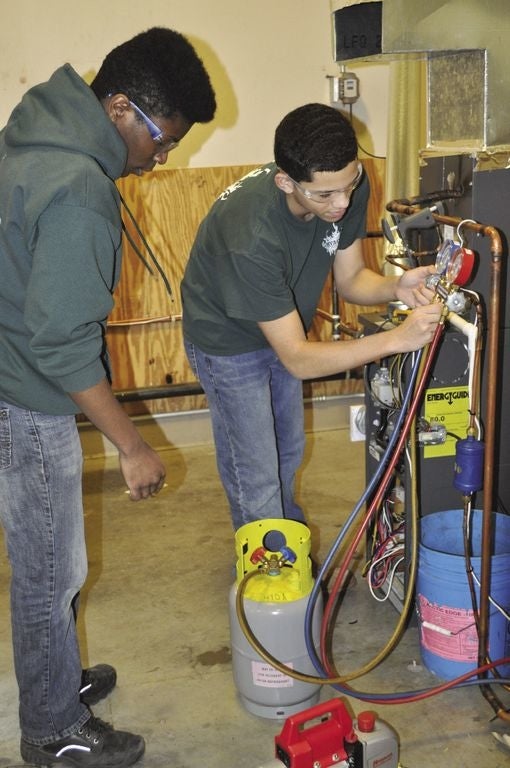Vocational education: high cost, high demand
 Students at Worcester Technical High School work on projects.
Students at Worcester Technical High School work on projects.
It would cost at least an additional $27 million per year to fulfill the unmet demand for high school vocational education programs across Massachusetts, programs that advocates say are critical to meeting the labor demands of businesses in the state, according to a report released Friday.
The Massachusetts Budget and Policy Center, in a paper titled "Skills For Our Future," reported that while a career, vocational and technical education (CVTE) costs about $5,000 per pupil more than a traditional high school education each year, good CVTE programs can boost college attendance and career earning power.
"The high performance of Massachusetts' economy is due largely to our highly skilled and well-educated workforce," Noah Berger, president of MassBudget, said. "Well-designed vocational education programs can provide students with high quality academic and vocational education, including hands-on learning, to prepare those students for fulfilling lives and careers."
The 28 regional vocational schools and nine in-district vocational schools in Massachusetts serve about 48,000 students, equal to roughly 17 percent of the statewide high school enrollment, MassBudget said. CVTE enrollment has climbed about 14 percent in the last decade, from an enrollment of 42,000 in 2005.
Though more students have enrolled in CVTE programs in the last 10 years, MassBudget said the demand for CVTE far outpaces the availability of programs, with a disproportionate share of the demand coming from the state's Gateway Cities.
There were 3,200 students on CVTE waiting lists statewide as of October 2015, MassBudget said, citing data from the Department of Elementary and Secondary Education, but that figure does not account for the 52 predominantly rural communities with no local, regional, or in-district vocational option for high schoolers. MassBudget estimated that 2,200 students from those towns would enroll in a CVTE program if they had access.
Gateway City students represent 53 percent of the CVTE waitlist -- 1,700 of the 3,200 students -- though Gateway Cities account for just 26 percent of students statewide. In Worcester, 500 students are waiting to get into a CVTE program, according to the Massachusetts Association of Vocational Administrators.
CVTE programs cost more than traditional high school programs because they tend to have smaller class sizes, more intensive supports, and equipment needs that far surpass traditional schools. The state's Chapter 70 education funding formula allocated $13,200 per vocational pupil for the last school year, compared to a $8,700 per-pupil rate for traditional high schools.
MassBudget said actual per-pupil spending for regional vocational schools in the 2014-2015 school year averaged $19,800, or $5,000 greater than the $14,800 average actual per-pupil spending statewide.
"With this in mind, we estimate that it would take $27 million annually at the very least to address the unmet demand for vocational programs," MassBudget senior policy analyst Colin Jones wrote in the report. "This baseline total of $27 million reflects the minimum districts would have to spend, the $5,000 per pupil incremental cost of vocational education (5,400 students at $5,000 each). This cost would be shared by the state and local communities, as students moving to vocational education would often generate additional Chapter 70 aid."
An economic development law approved in August included $45 million to invest in equipment and training at career and technical schools. The Alliance for Vocational and Technical Education said the funding in the economic development bill will facilitate dozens of grants over three years. An initial round of grants in February 2015 awarded $9.3 million to 35 high schools, community colleges and vocational training providers, according to the alliance.
In January, a group of business groups and others announced the formation of the Alliance for Vocational and Technical Education, bringing together organizations as varied as the blue chip Massachusetts Competitive Partnership, the interfaith Massachusetts Communities Action Network, and think tanks Pioneer Institute and MassINC to advocate for expanded access to CVTE programs. Former Lt. Gov. Tim Murray, now president and CEO of the Worcester Regional Chamber of Commerce, serves as a co-chair of the group.









0 Comments